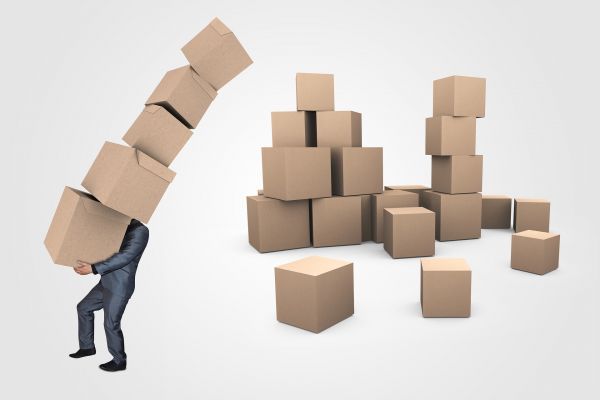Standing out from the Crowd, Part 5: Post-Kickstarter Process

Every year the board game industry grows and incorporates more and more dedicated players. The last few years have been termed the "board game renaissance," and in a lot of ways, it truly is the best era in gaming thus far. By the time industry magazine ICv2 reports of the most recent figures (typically 10-20% annual growth since around 2008), a plethora of new board game publishers have already sprung up. With the growth of Kickstarter, starting a publishing company has become a lot more accessible for those that don't have the financial resources to afford printing thousands of copies of a game on their own. This is great for consumers, though the immense competition requires all publishers to be on top of their game (pun definitely intended).
With this drastic industry growth, competing is becoming ever more difficult. As a publisher, there are some things you can do to stand out from the crowd, which we'll outline in this article series. This is the fifth article in the series (click to read: Part 1 - Part 2 - Part 3 - Part 4).
Post-Kickstarter Process
Running a Kickstarter campaign is a lot of work. There are a plethora of hoops that a creator must jump through in order to be successful. We've previously spoken to the theme, art direction, and marketing (all of which are extremely important for a successful campaign). We also spoke of some tips during the campaign. This part of the series is about the post-Kickstarter process.
After my first Kickstarter campaign funded I was ecstatic — my dream was becoming a reality. But I was also nervous. I could not help but think "now what?” I had researched manufacturing and shipping, but all the research in the world cannot prepare one for doing much of anything — the heart of knowledge is in application.
After fulfilling several campaigns, I have several tips on how to feel more at peace with the work ahead.
1. Pre-production Copy/Production Proof
If you were not able to receive a pre-production or advance copy of the game from the manufacturer to get an idea of the quality before the campaign, then you should certainly get one once the campaign funds.
Pre-production copies aren’t printed using the same equipment as the mass run, but it will still give you a solid idea of anything that you might want to change before proceeding with manufacturing.
Once you have made any needed changes and given approval, you’ll have to send payment for manufacturing. Typically, Chinese manufacturers require 50% pre-payment and 50% when the manufacturing is complete (or occasionally when they arrive to port in China).
I always require my manufacturer to print everything and send me several production proof copies to check before they assemble the rest of the games as well. If there happens to be a piece that was manufactured wrong, it is cheaper and easier to find out about it as well as fix it before the games are assembled and shipped out to customers.
2. International Shipping
International shipping is expensive, time consuming and somewhat difficult. It’s definitely my least favorite part of the process — fortunately, there are a plethora of international fulfillment centers which can assist with the freight shipping as well as the individual shipping to Kickstarter backers. We’re currently working with Quartermaster Logistics since they’re also based out of Orlando, which is very convenient for us. QML is an amazing service and they work with a host of international fulfillment partners outside of the US, so worldwide shipping prices through QML are quite competitive.
In order to avoid customers paying VAT taxes you’ll have to have games shipped and fulfilled from the EU. We typically use GamesQuest for this, but we’ve also heard of a few others including Spiral Galaxy Games.
3. Returns/Refunds
After the campaign — no matter what manufacturer or fulfillment company you work with — there will be some complaints.
Sometimes mail handlers are not careful with packages, maybe the worker in China forgot to add a piece to the game, maybe a piece was damaged, maybe the package was lost in transit. Things happen.
Just be prepared to take some time to resolve all issues as quickly and efficiently as possible. Have excess inventory at all the fulfillment companies you work with in order to ensure that you are able to deliver another game if one is lost or damaged. Some manufacturers will print excess components to give you just in case there are any problems.
4. Post-campaign Sales
After the campaign, selling the additional units may be hard depending on your distribution plan. One option is to consider working with a consolidator that will put games in the hands of distributors — these companies are very selective about the companies and games they bring on, but they offer a valuable service. The three largest are PSI, Impressions, and Hit Point Sales.
If not going into distribution, games can be sold via Amazon, an online web-store, and at industry conventions.
Furthermore, a company can seek out licenses for their games in other locations. If you have a great game maybe a company would like a Polish language version or a Spanish version. Typical license deals don’t net a tremendous amount of money, but for an industry with fairly low margins each additional dollar adds up. Also, licensing your games and having them seen by more players is always a tremendous thing for your brand.
That's all for now!
What else do you want to you want to hear from us in this article series? Let me know on Twitter at @AtherisAndrew




